As perceived by strategists, future wars are going to be short and intense. This fact is well accepted by military commanders as well. The Corps today has to match up with number of specialised roles in the Tactical Battle Area (TBA). So the flexibility and swift action at all levels will be of great importance to shape the battlefield. Induction of the Advanced Light-utility Helicopters (ALH) is already underway. These helicopters will be of great importance to the field formation commanders. The first squadron of ALH was inducted into Army Aviation in 2002. From then onwards the induction of these helicopters has been a continuous process. However, the medium and heavy-lift helicopters which form the core of the tactical lift capability continue to be with Air Force.
Army aviation is a very crucial component of army for both war and peacetime operations. Keeping in mind our diverse terrain i.e. mountains, jungles and vast patches of desert, it is important for the field formation commanders to exploit the vertical dimensions of the battlefield to the maximum to have total control over the battlefield. During peacetime it can play a very vital role from the point of homeland security and disaster relief.
There is no doubt that Army Aviation is going to play an enhanced role in the future…
Hence it becomes very important for the political leaders and military commanders to look at this arm with more sincerity and urgency so that this arm can shape itself well enough to give it flexibility and mobility whenever required.
Present Status
At present, the Army Aviation Corps (AAC) has in its inventory the largest number of helicopters amongst the three services, majority being the light reconnaissance and observation class i.e. the Chetak/Cheetah. In spite of being obsolete these helicopters have done great service for this arm – in peacetime for disaster management or during war time, even on the Siachen glacier for the last four decades. Now keeping this fleet operational is becoming practically impossible due to vintage and spare criticality.
As perceived by strategists, future wars are going to be short and intense. This fact is well accepted by military commanders as well. The Corps today has to match up with number of specialised roles in the Tactical Battle Area (TBA). So the flexibility and swift action at all levels will be of great importance to shape the battlefield. Induction of the Advanced Light-utility Helicopters (ALH) is already underway. These helicopters will be of great importance to the field formation commanders. The first squadron of ALH was inducted into Army Aviation in 2002. From then onwards the induction of these helicopters has been a continuous process. However, the medium and heavy-lift helicopters which form the core of the tactical lift capability continue to be with Air Force.
At present, the Army Aviation Corps (AAC) has in its inventory the largest number of helicopters amongst the three services…
Similarly, two squadrons of M-25 and M-35 attack helicopters which were bought out of Army budget still continue to be with the Air Force though operationally under the Army. The optimal use of these helicopters is not possible under the present set up by field formation commanders due to command and control problems between the two services. This is a known problem which our political and military leaders need to understand. The army’s requirement of one flight per command of fixed-wing aircraft of ATR/Dornier class for roles like command and control, aerial communication hubs, logistics including casualty evacuation and communication flights has also not fructified due to strong objections from the Air Force. This is despite the fact that paramilitary forces in India have their own fixed-wing aircraft. A worldwide survey of military aviation organisations reveals that there are inadequacies in the Indian Army Aviation Corps.
There is no doubt that Army Aviation is going to play an enhanced role in the future, both in peacetime for disaster management and in military operations. This will not be possible unless this arm grows both quantitatively and qualitatively. With the latest technological advancements all over the world most of the wars are going to be fought at night. For this, the induction of machines needs to be viewed seriously. The aircrew are not only required to be proficient in flying but also to be in the field to understand the army manoeuvres, operational thinking and ground tactics.
The Army Aviation Corps is in the 27th year of its raising. From operating the Austers/Krishaks two-seater fixed-wing aircraft as part of the Air Force (erstwhile air observation post unit) to the induction of light observation helicopters in early 1970s, Army Aviation continued to operate under the command and control of the Air Force till 1986. After much opposition from the Air Force, the Army Aviation Corps came into existence November 01, 1986. However, its growth has not been commensurate with the requirements of our military leaders – the main reason being the steadfast opposition of the Indian Air Force to Army Aviation Corps expansion plans, related both to its role and assets.
Most of the armies in the world including our immediate neighbours China, and Pakistan have their dedicated air arm to support their operations. Keeping this in mind there is a definite need to look at this arm more seriously so that it shapes in to a very potent force in the times to come.
Most of the armies in the world have their dedicated air arm to support their operations…
Future Ahead
There is no doubt that future wars will be fought keeping in mind the technological advancements and the nuclear-intense environment in the world. This fact really points out that all the combat elements must be optimally utilised to achieve decisive results. These facts are well accepted by our military leaders. The fluidity of operations in the TBA demands quick decision-making, swift deployment and utilisation of all response resources to the maximum. Failure to achieve this will lead to sub-optimal utilisation of combat resources may lead to denial of outright decisive victory in operations.
Exploiting the vertical dimensions through rotary wing is essential to achieve quick success in TBA as it is both an element of manoeuvre and delivery of fire power. Integration of all the resources in the TBA is a sure short mantra to battle area success. The concept of air mobility has ever since remained attractive to armies of the world over. The concept of tactical mobility is a cardinal feature of any military doctrine. It calls for extensive use of helicopters and fixed-wing aircraft to transport both airborne and infantry units together with supporting equipment, either across or along the edges of the battlefield.
Armies all over the world have directed substantial efforts in improving their rotary-wing inventory towards this end. The US army regards the chief function of the medium-lift helicopters as being carriage of equipment and weapons whereas Germany looks at troop-lifting capability of one battalion per corps in one operation.
Attack helicopters have been designed, keeping in mind anti-tank roles as foremost importance so that they may counteract any numerical superiority of armour on the battlefield. The strategy to counter armour is not always with an attack helicopter where the compatible ratio exists; in that case they may have to perform the Infantry support role.
The AAC is yet to emerge as a composite third dimension force multiplier to meet the requirements of an integrated battlefield scenario in future wars. The development of the Light Combat Helicopter (LCH) by Hindustan Aeronautics Limited is a great achievement. Designed to operate at high altitudes, the LCH has a service ceiling of about 21,000 ft. It will come armed with an M621, 20mm turret gun, 60/80mm rocket besides anti-tank guided missiles as well as air-to-air missiles. But this is not sufficient to depend on till the air arm of the army becomes totally independent with the requisite number of helicopters of all types and fixed-wing aircraft to meet the requirements of field formation commanders in totality.
Looking Forward
Keeping in mind the above facts of modern warfare and technological advancements, the Army Aviation Corps has to be given a boost in its inventory to meet future challenges so that the vertical dimensions in TBA are fully exploited in total integration with land forces. The military leaders must realise that all future accretions are planned with an open mind to cater for at least two to three decades with multi-role helicopters. It will prove to be a cost-effective and operationally viable proposal. To cater for the threat perception and requirements, the following accretions are proposed to make the AAC a potent air arm of the future.
Recce and Observation Helicopters
The existing vintage fleet of Chetak/Cheetah is planned to be replaced by new generation helicopters for which the field trials have already been completed. Only the political nod is required for their induction.
Armies all over the world have directed substantial efforts in improving their rotary-wing inventory…
Light Utility Helicopters
In order to provide tactical mobility to a small body of troops in TBA, the induction of the Advanced Light Helicopter has already commenced. This helicopter, which has both day and night capability, has undoubtedly proved its mettle in past exercises.
Tactical Battle Support Helicopter
To provide dedicated tactical mobility at the field formation level there is a plan to get Tactical Battle Support Helicopter (TBSH) to the army in the near future.
Attack Helicopters
October 12, 2012 will go down in the history of the Indian Army and Army Aviation Corps as a red letter day with the Ministry of Defence (MOD), after decades of vacillation, finally taking the call on the crucial issue of the ownership and operations of Attack Helicopters. In order to support armoured formations, induction of the LCH is already planned for future induction. However, having heavy duty attack helicopters cannot be ruled out.
Special Operations Squadron
A Special Operations Squadron is also planned to be inducted in the AAC for dedicated aviation support to our special task forces.
EW Flight
To exploit the electronic warfare efforts, the raising of Heli-Borne Early Warning has also been planned.
Light Fixed Wing Aircraft
The AAC is also planning to have one fixed-wing flight per command consisting of five aircraft to cater to its operational, logistics including causality evacuation and communication tasks. These aircraft can be of ATR/Dornier class. HAL is also planning to induct the Multi-role Transport Aircraft (MTA) 20-tonne class to replace the AN-32. For this, they plan on a tie-up with Russian company Irkut Corporation. The Indian Army is also eyeing this aircraft to be inducted in its fleet.
HAL is also planning to induct the Multi-role Transport Aircraft (MTA) 20-tonne class to replace the AN-32…
Technological Advancements
The planners making these material changes to current force inventories must bear in mind that all the equipment is going to stay in service for next two to three decades. Accordingly, the selection of equipment has to factor in requisite upgrades to match the latest technology, if required, at a later stage. Moreover, the selection will depend on the type of operations which are envisaged keeping in mind our neighbours and their capabilities.
Attack helicopters or helicopter gunships as they are also known as have become almost instantly, identifiable given their prevalent use in combat zone as seen in Iraq and Afghanistan operations. Attack helicopters have the capability to engage targets on the ground as well as in the air allowing them to perform multiple roles. The modern attack helicopters need to adapt at providing anti-tank capability and close air support for ground troops. Some of the latest attack helicopters available in the world are Eurocopter (Tiger), Boeing AH-64 Apache, Bell AH-1z (Viper), Kamov KA50/52, WZ-10 (Thunder Fire), WZ-19 (Blank Tornado) and AW-129 multi-role helicopter.
Other technological advancements which need to be kept in mind while selecting these machines are optical recognition and non-line of–sight. Communication is a key area which requires attention so that army aviation can contribute to the success of operations in the field. Self-protection suite, observation and targeting systems to include high-definition imaging turrets, enhanced day and night capable helmet mounted displays, state-of-the-art night vision goggles, army digital network-centric communication for integration with the battlefield environment, installations of friend and foe sensors, tactical data link-voice control will be necessary. An ultra-violet approach warning system, which has certain advantages over similar radar or infra-red based detectors are meant to warn the pilots of approaching missiles to enable them to take counter-measures. This project is with Bharat Electronic Limited. There are many other countries such as the US, Israel, Germany and Sweden who use such systems.
Presently, some of the helicopters fitted with these Aerial Early Warning systems are Augusta Westland EH-101, Kamov Z-31, Mils MI-172-2, Sikorsky AR 2s-1W, Sikorsky SH 3H and West Sea King AE2/5/ASc C-7.
Unmanned Aerial System (UAS): Present and Future
A number of countries have already launched futuristic programmes with the latest technologies which cater for size, shape, and payload. The US has already started the development of its Next Generation-Unmanned Aerial System (NG-UAS). Our immediate neighbour China has already displayed 40 models during its different air shows. This is a matter of concern for us. It is a foregone conclusion that very soon, our adversary Pakistan will have these Chinese-built aerial systems. The versatility of UAVs to destroy hostile targets has been amply demonstrated particularly against terrorist camps in Iraq and Afghanistan. In Afghanistan, a pin-point target has been destroyed with accuracy. Similarly, the US used the first ever unmanned helicopter in Afghanistan to carry out resupply missions in a combat zone.
All the three services need to draw up a roadmap for development and induction of UAVs in India.
India inducted the Unmanned Vehicle (UAV) in the late nineties; initially, Searcher Mk I, Searcher Mk II and finally, the Heron UAV. UAVs are great force multipliers and they must be used in synergy between all three services till the time we have a sufficient number of UAVs in our inventory. Primarily, the UAVs are utilised by the army for intelligence gathering including reconnaissance and surveillance, direction of artillery fire, battle damage assessment, aerial photography, target tracking and localisation, target designation (using integrated laser target designator) but they need to be exploited much more than their present use.
Presently, India’s holding of UAVs is very low and definitely there is need of much greater quantities to meet the battlefield requirements of the future. In the Indian environment, there is an immediate need to weaponise these UAVs for precision targets.
The Indian Armed Forces need to judiciously examine the future requirement of UAVs and not ignore the use of unmanned helicopters. As far as the army is concerned, at the strategic and operational level, there is a definite requirement for Unmanned Combat Aerial Vehicles (UCAV) and short-range loitering missiles. At a tactical level, hand-launched mini UAVs will be required. The country’s premier agency in the aviation sector, Aeronautical Development Establishment (ADE) has handed over NISHANT and is in the process of developing RUSTOM and the Unmanned Combat Aerial Vehicle (UCAV) for our armed forces. The ADE should also look at military application of unmanned rotary wing for the future.
In the end, we do require a very large number of these systems to fulfill our requirements. All the three services need to draw up a roadmap for development and induction of UAVs in India. Till the time we become self-sufficient in our production, we must identify the latest systems in the world. We must procure UAVs from Israel, one of the best and advanced producers of UAVs. Till we have an adequate number of these systems we must synergize their utility among the three services for their effective use.
Conclusion
In conclusion, one can only say that army aviation is on the threshold of major material change and modernisation. It, therefore, becomes more pertinent for the planners to have a roadmap which is far-sighted and sustainable for the years to come to meet the multi-role requirements of our forces. Sufficient thought should be given to the provision for latest upgrades at subsequent times. With UAVs having played a very crucial role in Afghanistan and Iraq wars, the use of UAVs along with our air assets cannot be ignored for optimal results.




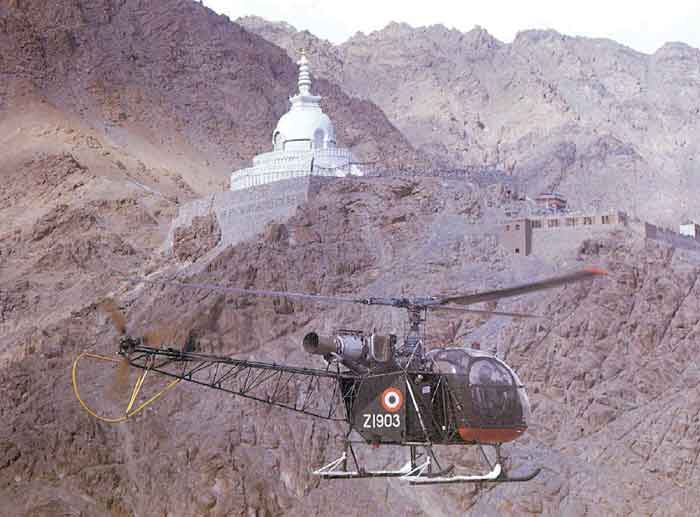
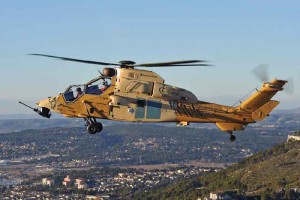
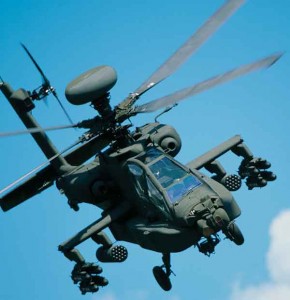
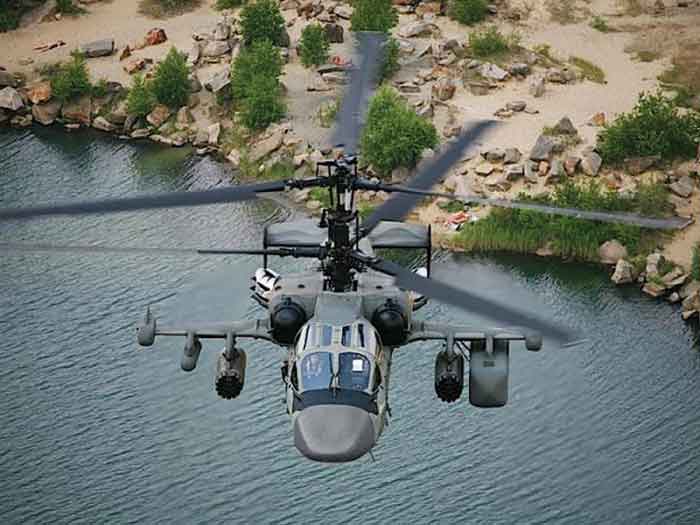
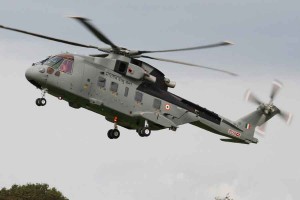
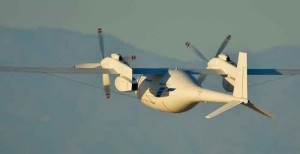
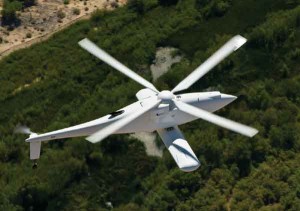
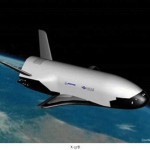
Looking at the Eurocopter and the Apache variant, the Apache is a weapons platform, and the weapons are supposed to be effective, before considerations for the aircraft’s defence are even considered. All the weapons are beyond visual range, and if the avionics and weapons systems are not as good as the competition, the Apache is not as flyable as the Eurocopter Tiger. The Tiger is supposed to have less targets than the Apache.
I have a few questions
Shouldn’t we have more jointness in out armed forces, with more sharing of each other’s expertise, rather than have independent resources? Shouldn’t we have more joint theater commands like the Andaman & Nicobar command?
Why can’t we learn from the war-fighting experience of US in Iraq and Afghanistan, where the Pentagon came to the conclusion that jointness is the way forward. What are the reasons due to which Indian Armed Forces can or should not adopt such a model?
Is it the political class, the bureaucracy or the armed forces which do not like jointness in the services, and why?
Thanks!